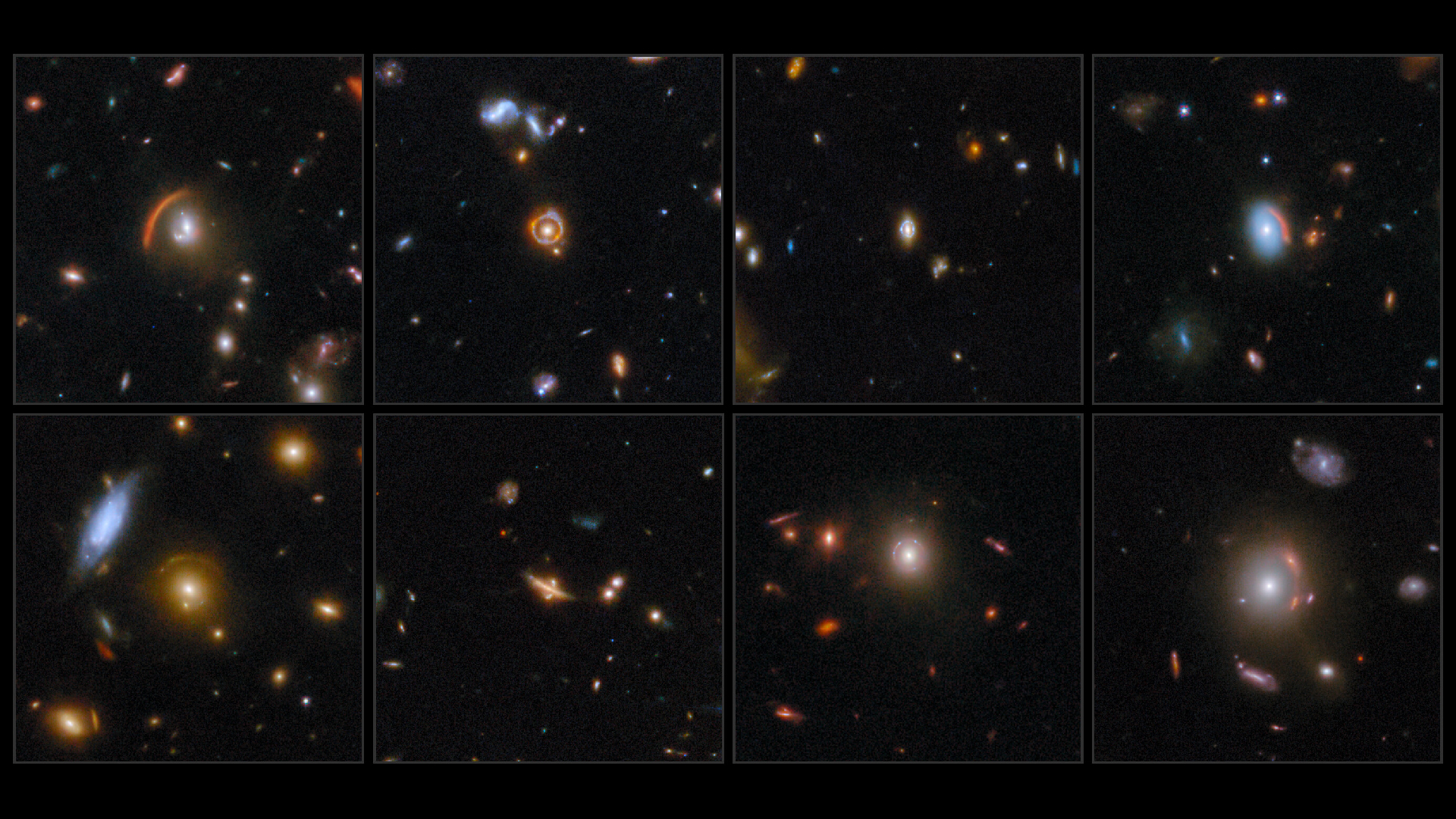The James Webb telescope proves Einstein right, 8 times over — Space photo of the week
The James Webb Space Telescope's latest image shows eight spectacular examples of gravitational lensing, a phenomenon that Albert Einstein first predicted some 100 years ago.

What it is: Eight "Einstein rings," officially known as gravitational lenses
Where it is: The deep sky
When it was shared: Sept. 30, 2025
As telescopes peer into the universe, they sometimes see quirks of nature that magnify faraway objects. These eight galaxies recently imaged by the James Webb Space Telescope (JWST) appear stretched, warped or even bent into perfect circles.
The odd shapes aren't camera tricks. They're caused by a cosmic effect called gravitational lensing, which turns massive galaxies into natural magnifying glasses.
Imagine space as a stretchy fabric. When a massive object, such as a galaxy, sits on that fabric, it bends the space around it. When light from a more distant galaxy passes through this warped space, its path curves. When the alignment is just right, that background galaxy's light is distorted into arcs or rings. The effect can create a glowing circle of light called an Einstein ring, named after Albert Einstein, who predicted this strange phenomenon more than 100 years ago. However, partial arcs and rings are more common.
Gravitational lensing helps astronomers see farther and clearer than ever before. These lenses magnify and amplify light from very distant galaxies that would otherwise be invisible. They also allow scientists to measure the mass of galaxies, including mysterious dark matter that can't be seen directly.
These spectacular new deep-field galaxy images come from a project called COSMOS-Web, one of the largest observing programs carried out with JWST. Scientists spent 255 hours pointing the telescope at more than 42,000 galaxies and found more than 400 possible examples of Einstein rings. The eight here are some of the most dramatic.
Perhaps the standout is the second image along the top. It shows COSJ100024+015334, a perfect circle that reveals a galaxy as it existed when the universe was just a billion years old — a fraction of its current estimated age (more than 13 billion years old).
Some of the galaxies had been seen before with the Hubble Space Telescope, but JWST's sharper infrared vision reveals details that were completely hidden until now. Others are brand-new discoveries, including galaxies made red by dust and distance.
Get the world’s most fascinating discoveries delivered straight to your inbox.
The rare alignments that create Einstein rings allow astronomers to study the building blocks of galaxies, star clusters and exploding stars. These windows into the distant past reveal how galaxies formed and how dark matter shaped the cosmos in its early years.
For more sublime space images, check out our Space Photo of the Week archives.

Jamie Carter is a freelance journalist and regular Live Science contributor based in Cardiff, U.K. He is the author of A Stargazing Program For Beginners and lectures on astronomy and the natural world. Jamie regularly writes for Space.com, TechRadar.com, Forbes Science, BBC Wildlife magazine and Scientific American, and many others. He edits WhenIsTheNextEclipse.com.
You must confirm your public display name before commenting
Please logout and then login again, you will then be prompted to enter your display name.
